|

|
|
|
|
about us |
|
|
see the beast |
|
|
our photo album |
|
|
explore tucson |
|
|
links |
|
|
email us |
|
|
sign our guest book |
|
|
home |
|
www.davidandcarol.com |
|
Our Magnificent Journey |
|
Chapter 10 |
|
2008 |
|
Israel, Paris |
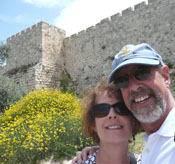 |
|
We slept soundly in the comfortable bed amidst wonderful peace and quiet in this land that once belonged to the Syrians. The irony of the cool stillness of this place as juxtaposed against the turmoil of the 1967 war here is not lost on us. |
We awoke to a cool, sunny day with clear blue skies. This gorgeous B&B is situated on a farming moshav high up in the Golan Heights. Breakfast of omelet, cappuccino, sweet onion pie, toast, jam, eggplant, tuna salad and lemonade was delicious. Our host, Tal, could not have been any more gracious and accommodating, and he was kind enough to allow me to use his laptop to send an email message. |
 |
We thanked Tal, said shalom, and then drove north through the Golan, past Mt. Hermon. The Israeli military has a very strong presence here, with bases every 5 or 10 km. We passed many bombed-out and bullet-ridden Syrian bunkers and buildings. |
We stopped at Moshav Odem, at the foot of Mt. Hebron, to tour the family-owned Odem Mountain Winery. A charming fellow named Adam, one of the sons, gave us a most informative 2-hour tour and then we spent some time sampling a few of the various wines, which were delicious. |
 |
We travelled north, through several Druze villages until we came to Madgal Shams (“Tower of the Sun”)) which Carol and I had seen in the movie The Syrian Bride. We came to the end of the town where the road ended at a fence. This fence, which had signs warning of dangerous live land mines, marked the border between Israel and Syria. 200 yards from us, on the Syrian side, is UN observation post. |
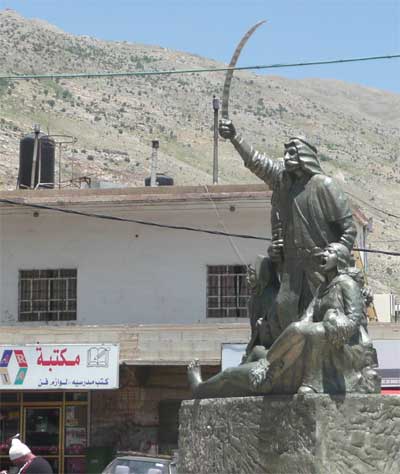 |
We stopped for sodas at a restaurant called The Witch and the Milkman on the Israeli/Syrian border near a town called Nimrod. In one direction we look across the hills into Syria. In another direction, we look across the Hula Valley, where swamps were drained, past Metula into Lebanon. |
 |
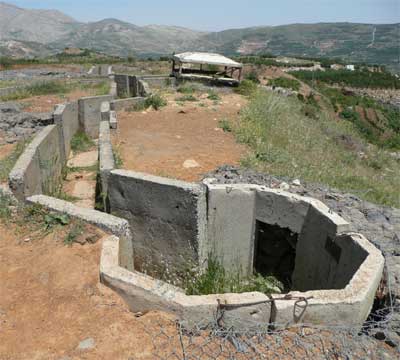 |
We passed ancient Nimrod Fortress. We are in the very most northern part of Israel. Here is where several streams join together to form the Jordan River. We stopped at the River to watch people kayaking. It was surreal to see boats with Hassidim (Orthodox Jews) flow by, followed by boats with Arabs, everyone having a wonderful time. We are close to Makor from The Source. |
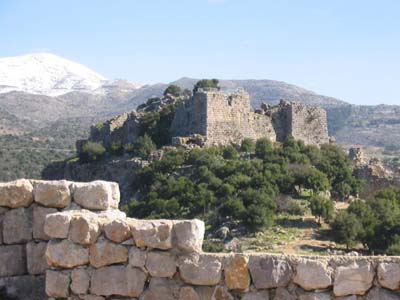 |
 |
Drove on to Metula, where we climbed a hill and looked down at the Israeli/Lebanese border. Here is where Hezbollah fired rockets into Israel in June of 2006. A mere mile separates Metula and a nearby Lebanese village. As we watched two UN peacekeeping armored vehicles patrolled the “no-man’s land” halfway between. |
 |
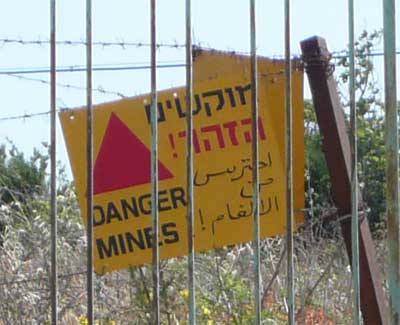 |
Just south of Metula we came to a Jewish cemetery near Kiryat Shmona where 11 young paratroopers were killed by a rocket fired out of Lebanon as they were grouping and preparing to enter Lebanon in 2006. Over the years, Kiryat Shmona has suffered countless rocket attacks and shellings out of Lebanon. |
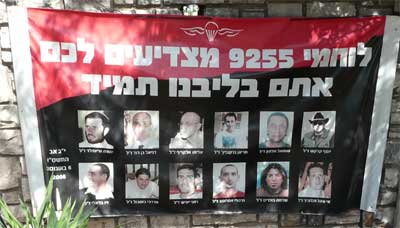 |
All around us are cultivated fields of cotton, corn and citrus on land that had once been unusable swamps. The Israelis planted Cyprus trees, which absorb the water, making the land arable. Bee hives are everywhere – this is the land of milk and honey. The soil is dark, rich and moist. We are back in the Galilee. |
We came to the Biryat Forest and enjoyed the cool air and shade of the tall trees high up the mountain. |
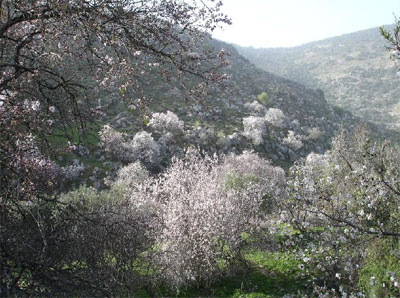 |
| Moving on we came to Rosh Pina, a Jewish settlement from the 1800s. |
 |
 |
Then, close to Rosh Pina, we spent some time in the shop of Pete Isakowitz (see his interesting web site: http://www.woodsong.co.il/), a woodworker from South Africa specializing in wooden musical instruments. He demonstrated several of his incredible instruments for us and we were impressed not only with his woodcraft but also his diverse musical talents. |
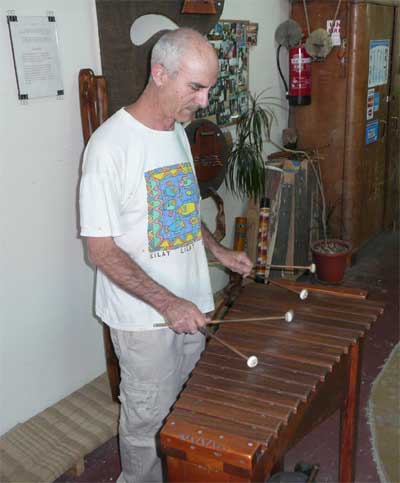 |
We turned west at the Sea of Galilee until we came to the Druze village of Beit Jann where Meira had made reservations for the four of us to stay in the home of a Druze family. The name of this lovely B&B is "Touching the Sky," which is quite appropriate since it is situated high on a hilltop overlooking the village. We were shown very gracious hospitality during our stay here. As we sat outside, overlooking Beit Jann (“House of Grain,”) we heard what sounded like model airplanes and when we looked overhead we saw two unmanned Israeli drones. The woman of the house told us that they were almost always in the air. Since we are so near to Lebanon it does not surprise us – most likely there are constant Israeli military drones keeping an eye on the area. |
 |
Yusef Abuchaya, the brother of the gentleman who owns the B&B where we were staying high atop a hill in Beit Jann in the upper Galilee, came to pick us up to take us to his home where his wife Nadia was preparing a special dinner for us. On the way down the hill Yusef pointed to a hilltop nearby where the Israeli army has an outpost. Yusef is a retired commander from the Israeli army, and he told us that from this nearby outpost, the Israelis use the drones to look into Lebanon and Syria and can see people across the border. |
We arrived at Yusef’s house and met his wife Nadia, and we then spent the next several hours enjoying dish after dish of very wonderful, delicious, fresh Druze dishes. Dinner was fantastic, but the true highlight of the evening was listening to Yusef (through our interpreter Meira) tell us stories of his life in the Israeli army (he lost his brother in the 1983 Lebanese war) and his life in as a Druze in Beit Jann. He proudly showed us his house and introduced us to his children, and he explained what it means to be a Druze, and we enjoyed being with him and his family. |
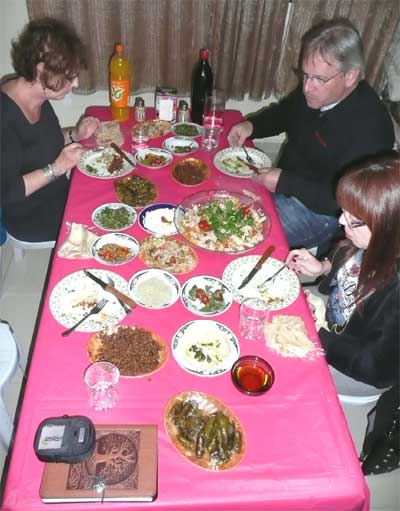 |
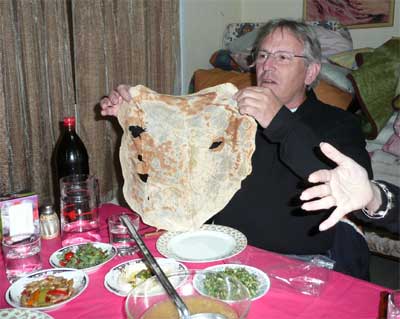 |
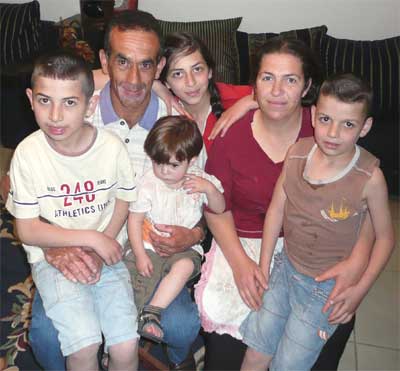 |
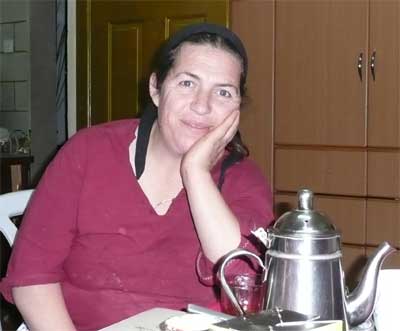 |
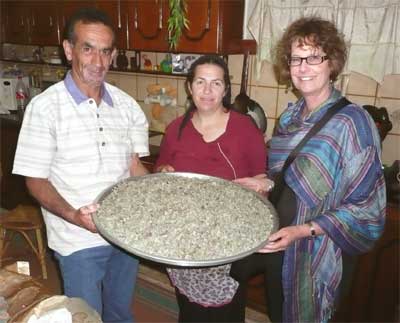 |
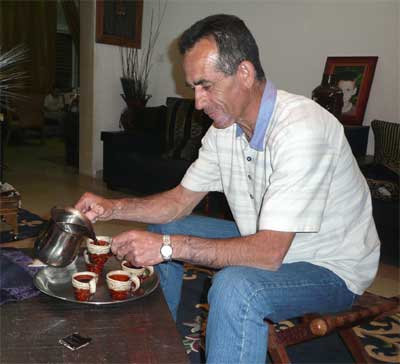 |
We profusely thanked Yusef and Nadia and said goodnight, then the four of us sat outside our rooms at the B&B, high above Beit Jann, and sipped wine as we watched the lights of Haifa and Acco along the Mediterranean to the west, and we compared notes about our different experiences with Judaism. |
At midnight we said Lilah Tov. Today was another adventure-filled day, but the dinner experience at Yusef and Nadia’s house was truly a once-in-a-lifetime experience and we are so honored to have experienced it with our wonderful, dear friends, Meira and Carmi. |
| Previous Day |
copyright 1998 / david
and carol lehrman / all rights reserved |
email david@davidandcarol.com |